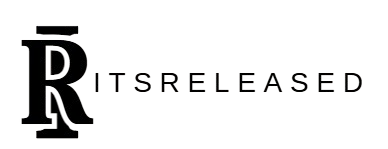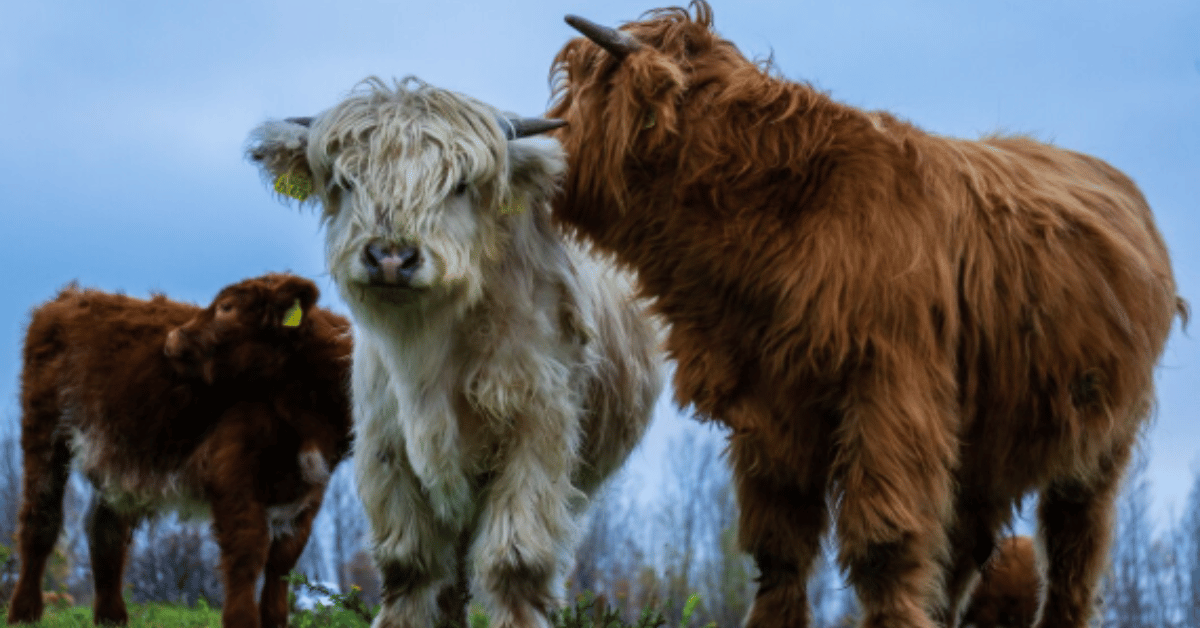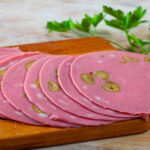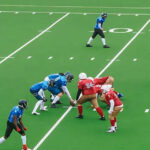The mini Highland cow has quickly become one of the most beloved and recognizable miniature cattle breeds in the world. Known for its long, shaggy hair, curved horns, and small stature, this charming animal has captured the imagination of farmers, hobbyists, and families alike. If you are searching for information about the mini Highland cow, the answer lies in its unique blend of beauty, practicality, and resilience. Within the first few minutes of research, most people discover that this breed offers more than just an adorable appearance—it represents centuries of Scottish tradition and adaptation. The mini Highland cow combines the rugged durability of the larger Highland cattle with a manageable size, making it suitable for small farms, sustainable homesteads, and even family-friendly ranching. This guide explores their history, physical traits, temperament, care requirements, costs, and cultural significance, providing everything a prospective owner or enthusiast needs to know.
Origins of the Mini Highland Cow
The Highland cow originates from Scotland, where it has been a cornerstone of rural life for over a thousand years. Known for surviving in harsh climates, their long coats and sturdy constitution allowed them to thrive on rugged terrain where other cattle breeds would struggle. The miniature version developed as breeders selectively chose smaller Highland cows across several generations, emphasizing compactness without losing the signature traits of strength and hardiness. This intentional breeding resulted in a cow that maintains the timeless look and adaptability of the original Highland cattle while requiring less pasture space and smaller feed rations. Unlike novelty miniature breeds created for aesthetics alone, the mini Highland cow retains its utility in producing meat, maintaining land, and contributing to small-scale farming operations, showing that its history is deeply intertwined with practical agricultural traditions.
Physical Appearance and Traits
Mini Highland cows are immediately recognizable due to their distinctive double coat of fur. The outer layer is long and coarse, often in shades ranging from ginger-red to silver-white, while the undercoat is softer, offering insulation in cold conditions. Their hair not only protects them from severe weather but also contributes to their iconic appearance, which many describe as both majestic and cuddly. Adult mini Highland cows typically stand between 36 to 42 inches tall at the shoulder, depending on breeding lines. Their horns curve gracefully outward, varying in length and shape, giving each cow a slightly unique profile. Despite their size, these cows are muscular and well-built, carrying the same structure as full-sized Highlands. Their compactness makes them easier to manage, but it does not diminish their capacity for grazing, producing offspring, or contributing to farm life, proving that they are more than simply ornamental animals.
Temperament and Behavior
One of the reasons mini Highland cows have gained immense popularity is their friendly and docile nature. These cows are known for their calm temperament, making them excellent companions for children and family environments. Unlike some cattle breeds that may be skittish or aggressive, mini Highlands generally adapt well to human interaction when raised with proper care and handling. Their herd mentality ensures they are happiest when kept with other cows or livestock, but they also show curiosity and often form close bonds with their caretakers. Farmers and owners note that their intelligence allows them to learn routines quickly, whether it be feeding schedules or gentle leading. Their peaceful demeanor reduces risks during handling, which is especially important for beginners in livestock ownership. As a result, mini Highland cows are not just practical farm animals but also treasured members of family farms and hobby ranches worldwide.
Feeding and Nutrition Requirements
Nutrition plays a vital role in maintaining the health and longevity of mini Highland cows. Because of their smaller frame, they require less feed than standard cattle, making them cost-efficient. Typically, their diet consists of quality grass pasture, supplemented with hay during winter or in areas where grazing is limited. They also benefit from mineral blocks and occasional grain, depending on the season and their reproductive needs. A mini Highland cow consumes roughly one-third less forage than larger breeds, allowing owners with limited land to keep them sustainably. Proper access to fresh water is equally essential, as dehydration can lead to stress and health complications. Their digestive system is efficient at processing fibrous grasses, which means they thrive in environments where other cattle may require heavy supplementation. Owners must be careful not to overfeed grains, as their smaller bodies are more prone to weight-related issues. Balanced nutrition ensures they remain hardy, productive, and vibrant throughout their lives.
Table 1: Size and Physical Characteristics of Mini Highland Cows
| Feature | Description |
|---|---|
| Average Height | 36–42 inches at the shoulder |
| Average Weight | 500–700 pounds |
| Coat Type | Double coat: coarse outer hair, soft insulating undercoat |
| Common Colors | Red, black, white, dun, silver, brindle |
| Horn Shape | Curved outward, varies by individual |
| Lifespan | 15–20 years |
| Distinctive Trait | Long, shaggy coat adapted for cold climates |
Land and Space Requirements
While mini Highland cows are smaller than their full-sized counterparts, they still need adequate space to roam and graze. Ideally, one acre of pasture can comfortably support two to three mini Highland cows, depending on grass quality and supplemental feeding practices. Their grazing habits are efficient, and they can maintain land by reducing overgrowth and promoting biodiversity in pastures. Unlike more intensive livestock, they do not require large-scale housing but benefit from simple shelters that protect them from rain, snow, and extreme winds. Fencing is an important consideration, as mini Highlands are strong enough to test weak barriers, though they are not escape-prone by nature. Owners with limited acreage often find them an excellent fit for small farms, where space optimization is critical. By requiring less land while still contributing to soil health and pasture management, they provide a sustainable balance between agricultural tradition and modern homesteading.
Breeding and Reproduction
Breeding mini Highland cows follows natural cattle reproductive patterns, though their smaller size requires careful management. Cows typically reach maturity between 2 to 3 years of age, while bulls are ready earlier. Calves are small at birth, often weighing between 30 and 50 pounds, which reduces calving difficulties compared to larger breeds. Mini Highland cows are known for strong maternal instincts, nursing and protecting their calves attentively. Selective breeding remains important for preserving the compact traits of the breed while avoiding health complications associated with inbreeding. Owners should seek reputable breeders who prioritize lineage, genetics, and animal welfare to ensure healthy offspring. The demand for mini Highland calves has risen dramatically, making them a valuable investment for farms. Many families and agricultural entrepreneurs have found that selling calves provides both financial rewards and the joy of sharing this rare and treasured breed with others.
Health and Veterinary Care
The hardy nature of mini Highland cows is one of their defining characteristics, but they still require responsible veterinary care. Routine vaccinations, deworming, and parasite control form the backbone of their preventive health program. Due to their thick coats, owners must remain vigilant for lice or ticks, especially in warmer months. Hoof trimming is another essential aspect of care, as overgrown hooves can lead to mobility issues. Fortunately, mini Highland cows are less susceptible to respiratory diseases than some breeds, largely because their coats provide insulation and protection. They do, however, need shade in hot climates, as excessive heat can stress their bodies. Regular checkups help detect problems early, ensuring these cows continue to thrive. Their average lifespan of 15 to 20 years reflects their resilience, but longevity depends on consistent management. “Healthy cows reflect healthy care,” as one breeder summarized, emphasizing the deep connection between husbandry and well-being.
Economic and Practical Benefits
Mini Highland cows bring practical advantages to small-scale farmers beyond their visual appeal. They require less feed, less space, and less intensive care than standard cattle while still contributing to meat production and land management. Their meat is lean, flavorful, and sought after in niche markets, making them a valuable product for farms seeking specialty goods. Moreover, their role as eco-grazers has expanded, with landowners using them for vegetation control instead of mechanical methods. Their approachable size makes them attractive for agritourism, petting farms, and educational programs. Families visiting farms often find the mini Highland cow an unforgettable highlight, blending agricultural learning with a memorable experience. In essence, they embody sustainable farming principles: efficient resource use, respect for nature, and balance between economy and environment. As one farmer described them, “They are small in size but big in value,” underscoring their importance in modern agricultural systems.
Table 2: Comparison of Mini Highland Cows vs Standard Highland Cows
| Feature | Mini Highland Cow | Standard Highland Cow |
|---|---|---|
| Height | 36–42 inches | 45–55 inches |
| Average Weight | 500–700 pounds | 1,000–1,800 pounds |
| Pasture Requirement | 1 acre for 2–3 cows | 1 acre per cow |
| Feed Consumption | Low to moderate | High |
| Lifespan | 15–20 years | 15–20 years |
| Market Popularity | High due to rarity and aesthetic appeal | Moderate, traditional farming markets |
| Primary Use | Hobby farms, pets, eco-grazing, meat | Meat, dairy, large-scale farming |
Mini Highland Cows in Popular Culture
In recent years, mini Highland cows have become social media sensations. Their endearing looks, often shared through viral videos and farm photography, have positioned them as icons of rustic charm. Many urban dwellers, disconnected from agriculture, discover these cows online and are captivated by their almost storybook-like presence. As interest grows, they are increasingly featured in lifestyle magazines, documentaries, and agritourism promotions. Their rise reflects a cultural longing for connection with nature and sustainable practices. Owning or simply visiting these cows has become symbolic of embracing simplicity and authenticity in an increasingly technological world. Beyond aesthetics, this cultural popularity has tangible effects on demand, driving the growth of breeding programs and influencing how farms market their offerings. They stand as living symbols of a broader agricultural renaissance, where smaller, sustainable farming practices are celebrated globally.
Environmental Impact and Sustainability
Mini Highland cows are more than just farm animals; they are contributors to ecological balance. Their grazing reduces the need for machinery, lowering carbon emissions on farms. Because of their ability to thrive on natural forage, they decrease dependency on processed feeds and fertilizers. Additionally, their manure enriches soil health, supporting organic farming practices. The breed’s adaptability to diverse climates makes them sustainable choices for small farms in varied regions. Owners who prioritize regenerative agriculture find mini Highlands an excellent fit, as they maintain pastures and support biodiversity. The smaller body size also means reduced methane output compared to larger cattle, addressing one of the key concerns in livestock’s environmental footprint. “In farming, small steps lead to big change,” an agricultural sustainability expert noted, highlighting how miniature cattle like the Highland represent innovative solutions to environmental challenges while keeping tradition alive.
Costs and Considerations for Ownership
While the charm of mini Highland cows is undeniable, prospective owners should carefully consider the financial commitment involved. Prices for calves often range from several thousand dollars, reflecting their rarity and high demand. Beyond the purchase cost, ongoing expenses include feed, veterinary care, fencing, and shelter. Insurance may also be advisable, especially for farms that include them in agritourism ventures. Owners must be prepared for long-term responsibility, as these cows can live up to two decades. Additionally, securing a reliable source of hay and pasture access is essential to prevent nutritional deficiencies. While smaller in size, they are still livestock, requiring daily care and monitoring. Many who take the leap into ownership describe the rewards as immeasurable, citing companionship, joy, and connection to heritage farming traditions. The decision is both financial and emotional, blending practical commitment with the profound satisfaction of raising such a distinctive animal.
Future Outlook for Mini Highland Cows
The future of the mini Highland cow appears bright, fueled by rising interest in sustainable farming, small-scale agriculture, and lifestyle farming. As populations seek alternatives to industrialized food systems, breeds like the mini Highland embody the balance between productivity and harmony with nature. Breeding programs continue to expand globally, ensuring genetic diversity while meeting demand. Technological advances in veterinary care, breeding management, and land stewardship will likely support healthier herds and broader accessibility. They may also play a larger role in educational initiatives, teaching younger generations about farming and environmental stewardship. “These cows remind us of the past while guiding us toward the future,” one agricultural historian observed, capturing their symbolic significance. With proper stewardship, the mini Highland cow will remain more than a trend—it will be a lasting contributor to global farming narratives.
Conclusion
The mini Highland cow is a remarkable blend of history, utility, and charm, embodying both tradition and modern sustainability. From their Scottish roots to their global cultural rise, these miniature cattle offer more than just adorable appearances. They provide practical benefits to farmers through efficient grazing, eco-friendly contributions, and niche market opportunities, while also capturing hearts as gentle companions. Their adaptability makes them suitable for small farms, families, and sustainable living advocates. Owning one requires responsibility, investment, and care, but the rewards are profound—connection to nature, participation in heritage traditions, and the joy of raising one of the world’s most endearing animals. The mini Highland cow stands as a symbol of how agriculture can be both beautiful and practical. For those seeking livestock that is as meaningful as it is manageable, this breed offers the perfect harmony of past and present, resilience and delight.
FAQs
Q1: What is a mini Highland cow?
A mini Highland cow is a smaller version of the traditional Scottish Highland cattle, selectively bred for compact size while retaining the breed’s distinctive shaggy coat, horns, and hardiness.
Q2: How big do mini Highland cows get?
On average, mini Highland cows stand between 36 to 42 inches tall and weigh 500 to 700 pounds when fully grown.
Q3: Are mini Highland cows good pets?
Yes, many owners keep them as companion animals. Their docile temperament and friendly nature make them suitable for family farms.
Q4: How much land do you need for a mini Highland cow?
Typically, one acre of quality pasture can sustain two to three mini Highland cows, depending on supplemental feeding.
Q5: What do mini Highland cows eat?
They thrive on grass and hay, with occasional grain supplements. They also need constant access to clean, fresh water.











